The RHS Chelsea Flower Show starts next Tuesday, and the Show Gardens are now nearing completion. Several of these caught my eye, including the Winton’s Beauty of Mathematics Garden by Nick Bailey.
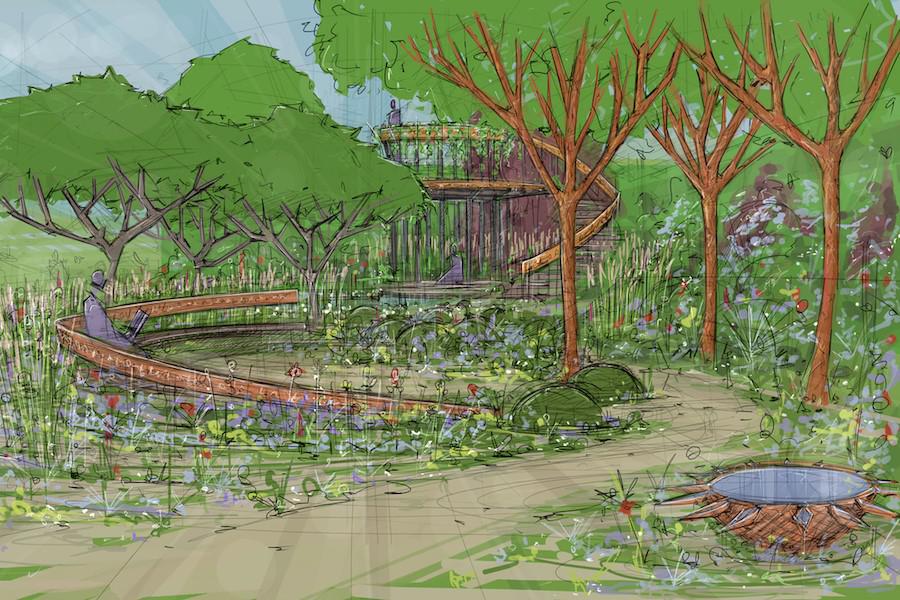
Winton Beauty of Mathematics Garden
There will be 16 Show Gardens, three more than 2015, with a good number of ‘show veterans’ designing gardens – Cleve West for M&G, Andy Sturgeon for The Telegraph, Hugo Bugg for Royal Bank of Canada, and James Basson for L’Occitane.
Diarmuid Gavin’s ‘The British Eccentrics Garden’ for Harrods is bound to be remarkable with its twirling trees and bizarre garden gadgetry springing to life every 15 minutes. It’s a complex design, and Diarmuid has worked with experts from architectural, engineering, blacksmithing and horticultural trades, including celebrated plantswoman and Irish compatriot, Helen Dillon.
Charlie Albone from Australia is returning for his second year at Chelsea. Buoyed by his Silver Gilt Award in 2015 for The Time in Between, Charlie has this year designed the Support garden (again for Husqvarna) created with a formal layout as a refuge for city dwellers.
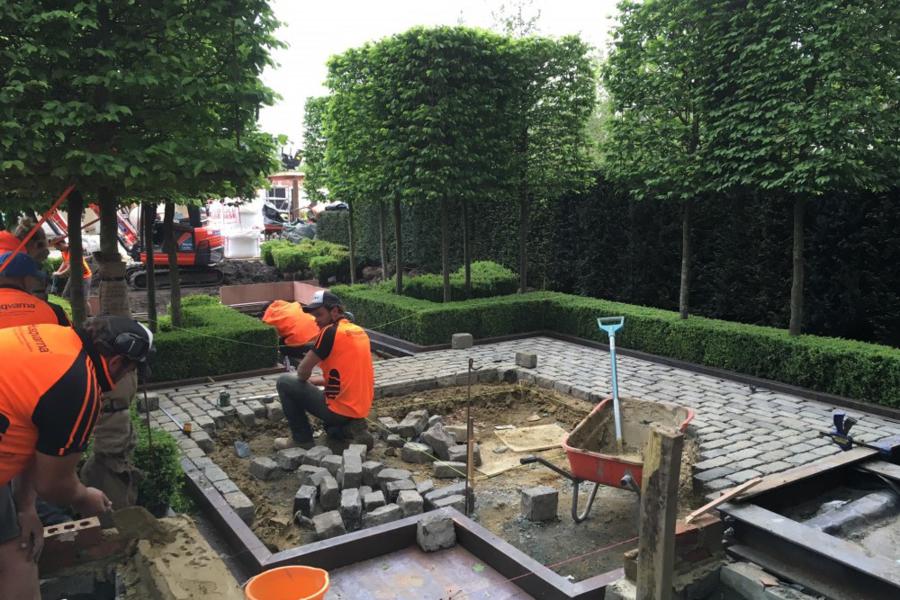
Charlie Albone and Conway Landscaping team on site at the Husqvarna Support garden.
A particular garden that sparked my interest is ‘The Winton Beauty of Mathematics’ Garden, by a Show Garden newcomer, with its copper ribbon structure curving amongst alluring plants, many of which show mathematical patterns in distinctive forms. Not being mathematically inclined, I admit that beauty and mathematics didn’t seem logical partners, but I am beginning to see the error of my ways. This plant-focussed garden has quite a fascinating mathematical theme that celebrates the beauty found in algorithms.
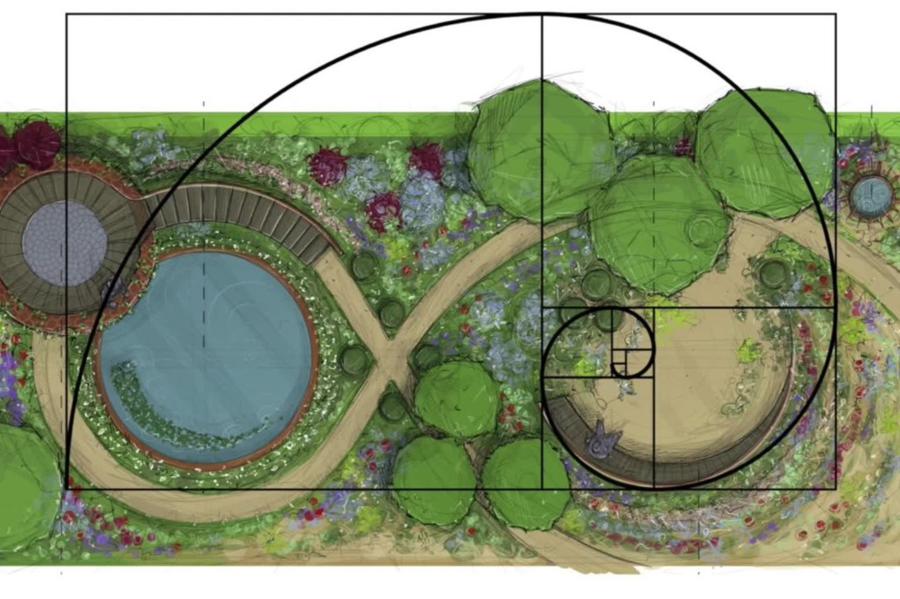
Winton Beauty of Mathematics garden plan
Mathematical concepts such as the Golden Ratio, often described as the divine proportion and connected with the Fibonacci sequence, are at the centre of this design’s intent. These mathematical patterns have an innate functionality in nature, and are what you can see clearly (once you know how) in objects such as pine cones, conch shells and pineapples. They form the heart of plants, growth and life’s shapes.
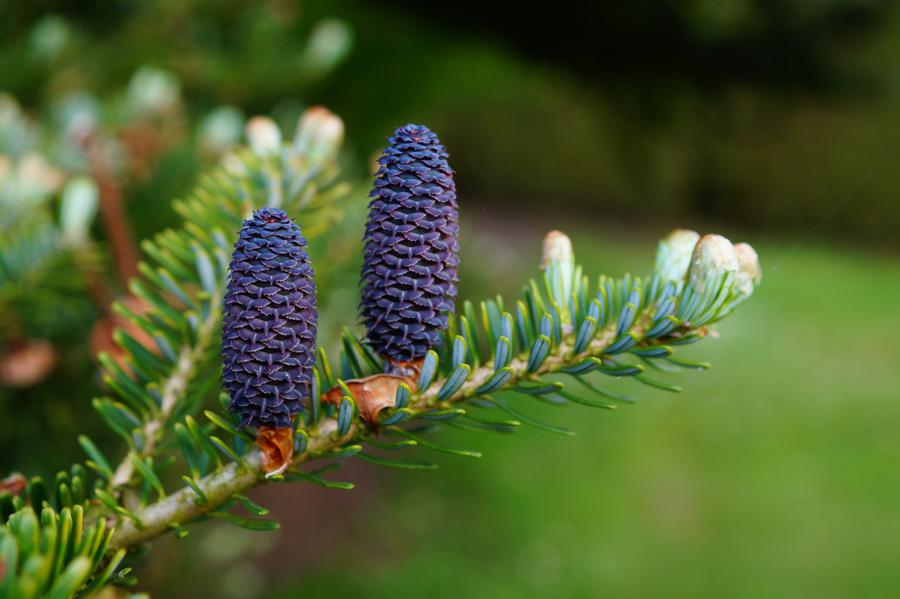

Plantsman Nick Bailey is head gardener at the renowned Chelsea Physic Garden in London, and this is his first foray into designing a Show Garden at Chelsea.
“This is the biggest event in my life”,
he says, clearly excited to be competing for a prestigious RHS award and proud to be representing Winton.
“This is an extraordinary opportunity to represent Winton on a global scale… there is prestige and magic at this show and it is a great way to express fresh and challenging ideas.”
In designing the plant palette, Nick researched the Golden Ratio and chose plant examples with a strong connection and visible Fibonacci patterns in their form, fruit, flowers and leaves – plants such as Aloe polyphylla (spiral aloe) with a form that matches its common name, and Gleditsia triacanthos (honey locust) with its complex, very regular leaf pattern. There is also Ceratonia siliqua (carob tree), the seeds of which have a consistent weight such that they were once used as units of measurement. Pines trees with cones will feature, which Nick carefully hand-selected from hundreds of specimens in Antwerp, Belgium and Pistoia, Italy. Plants in the Asteraceae or daisy family will also play their part.
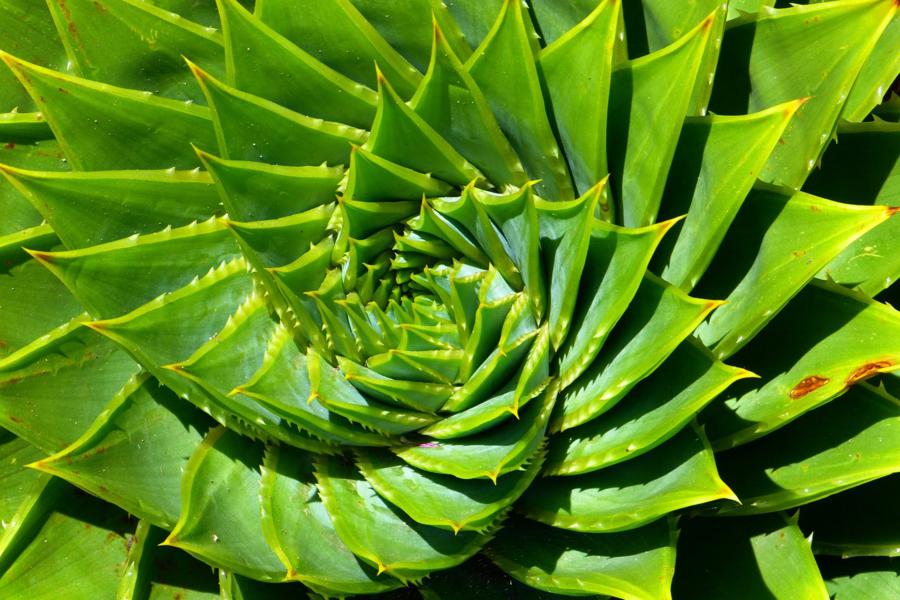
Aloe polyphylla
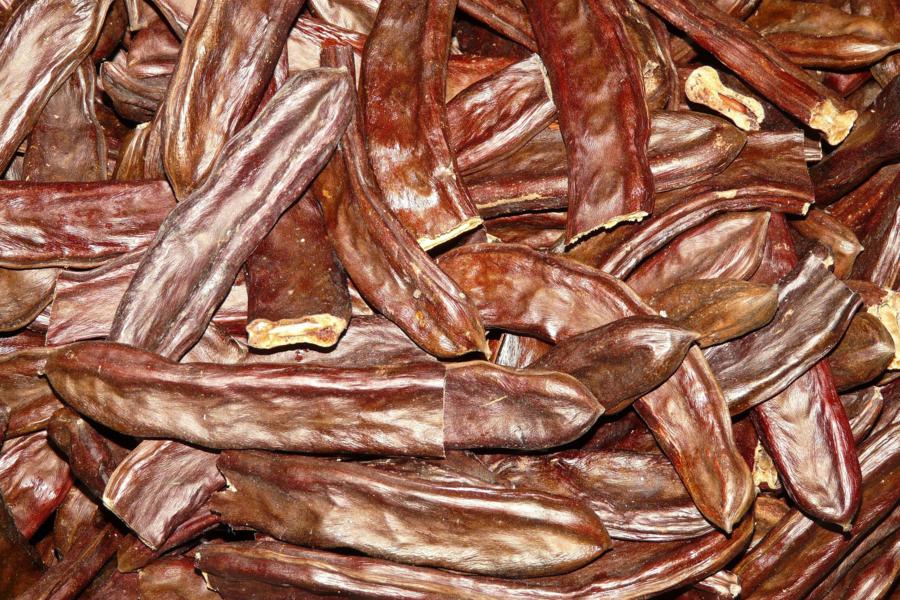
Carob pods
Amongst a palette weighted with southern hemisphere and Mediterranean plants, key plants will include Lotus berthelotii (trailing lotus), Luma apiculata (Chilean myrtle), Corokia virgata (wire-netting bush), and Ligusticum scoticum (Scots lovage). Perennials with purple and violet flowers will be significant, complemented with planting in tones of chartreuse, muddy-red, silver and white. Foliage tones are significant too with copper, pale-blue and silver repeating through the garden.
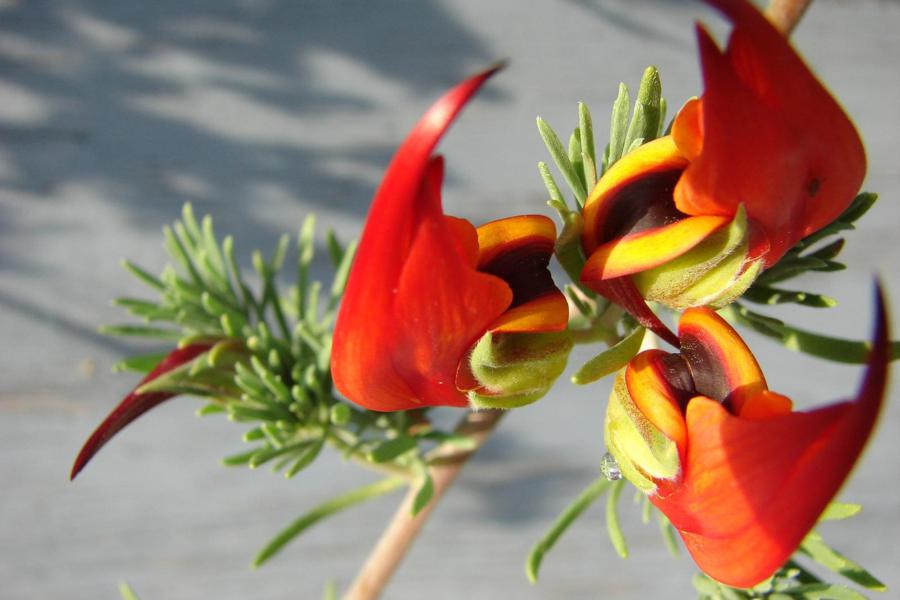
Lotus berthelotii
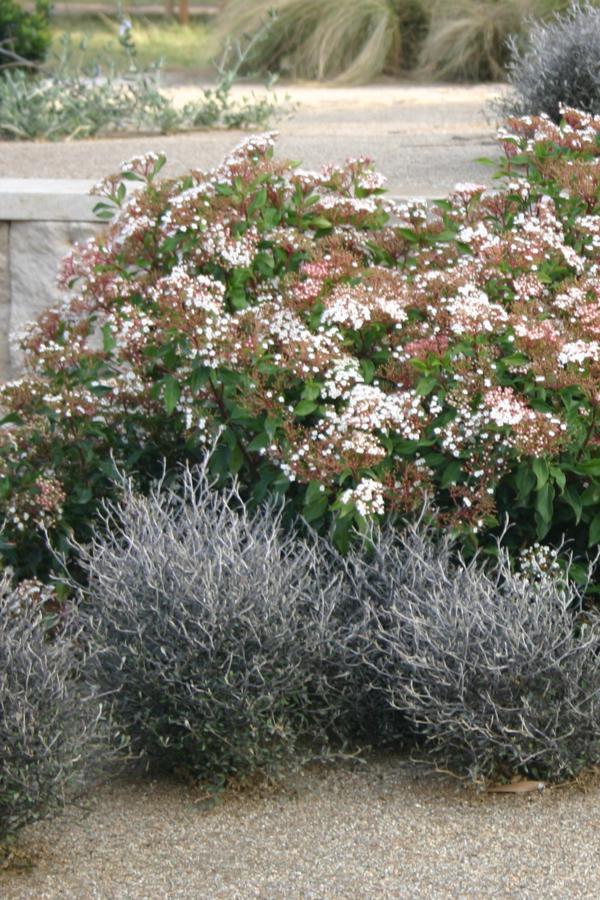
Corokia virgata – as used by Myles Baldwin at AGSS 2014
The wide range of species will provide a long season of forage for native pollinators, including bees. The trees provide nesting for birds and the pool will be slowly colonised by dragonflies, water snails and other aquatic life.
Nick started planning the garden in March 2014, and developed the concept with a beautiful flowing copper band etched with plant growth algorithms. He used a scale model of the garden fitted with a side sliding viewing panel to work out what the visitor would see from different viewpoints. As the band snakes through the garden, it takes on different functions from bench, to stair banister, to planter pitched 3.5m above the garden, and overflowing with trailing plants. Steel fabricator Rex Holloway has been busy bending steels and slotting the key components together ready for final assembly on site at Chelsea this week.
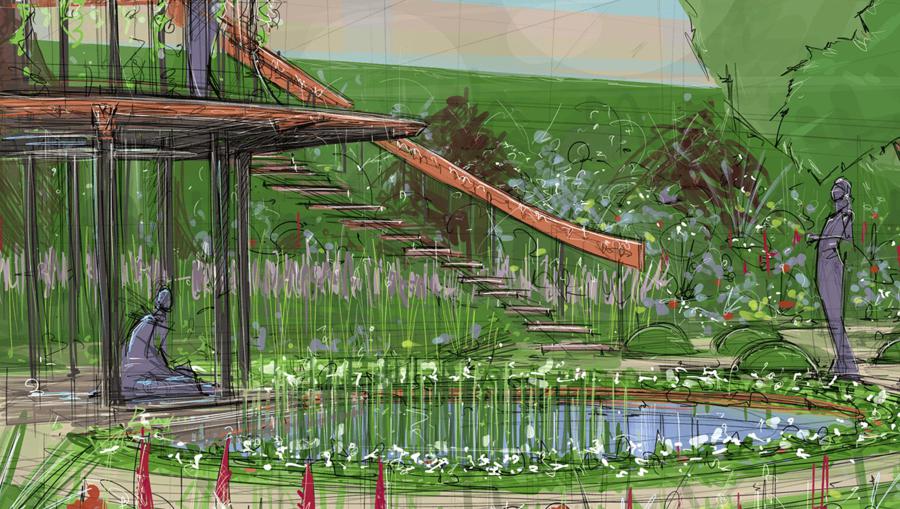
Winton Beauty of Mathematics garden – the curving steel band features
Another metal worker integral to the garden is sculptor, Giles Raynor, whom Nick collaborated with to design the copper bowl that will feature. This was a perfect fit for Giles, who uses mathematics in all his sculpture – as reflected in the geometric forms he works with and the precision needed to make them. The bowl encapsulates the Fibonacci sequence in its appearance. The bowl structure was initially made from spun copper with the outer decorative coating added to replicate the pattern of the Fibonacci theme. The bowl will become dynamic when filled with water as the dazzling metal spirals swirl the water to create a spinning hydro-vortex.
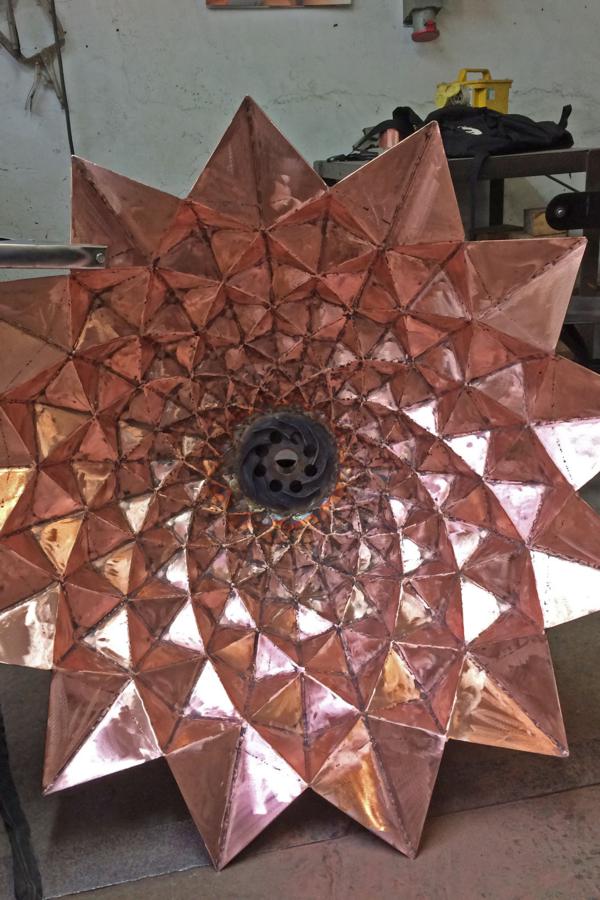
Fibonacci construction copper bowl by Giles Raynor
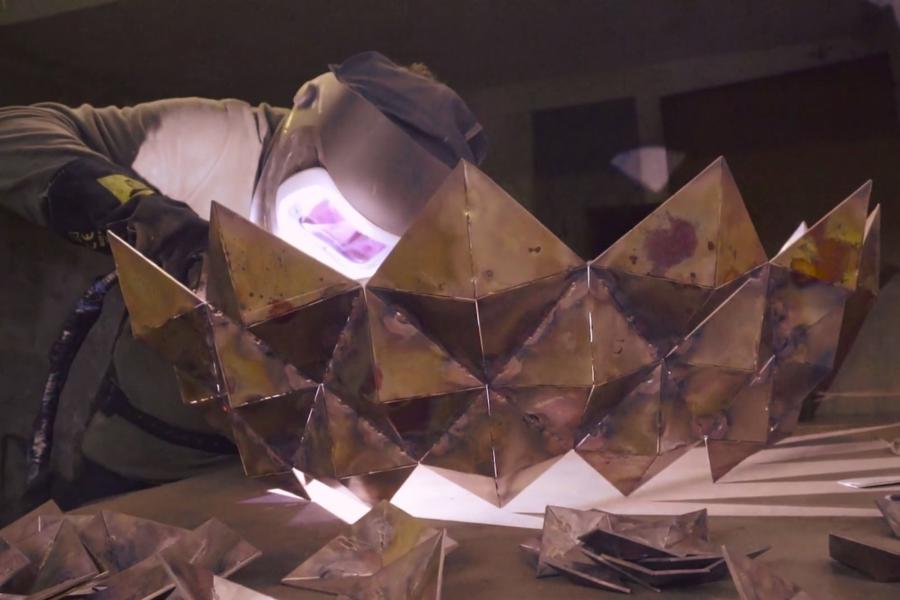
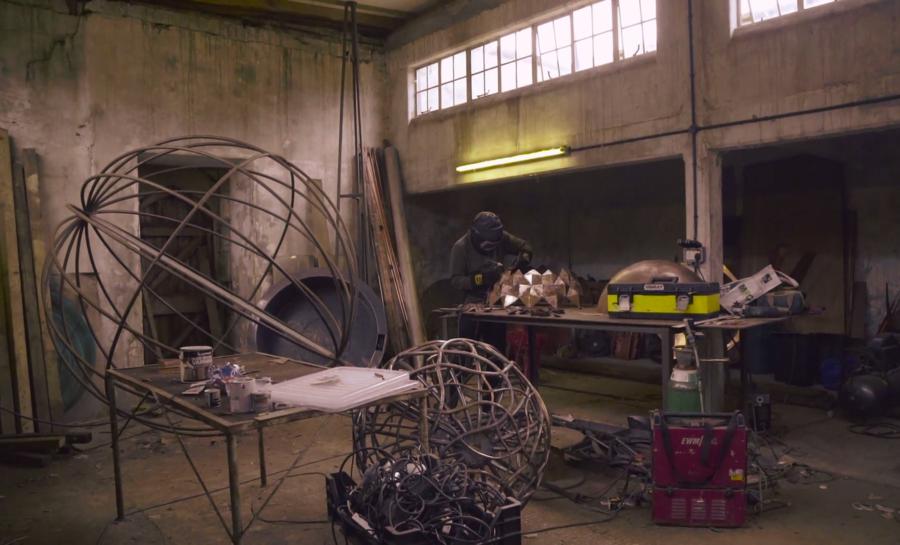
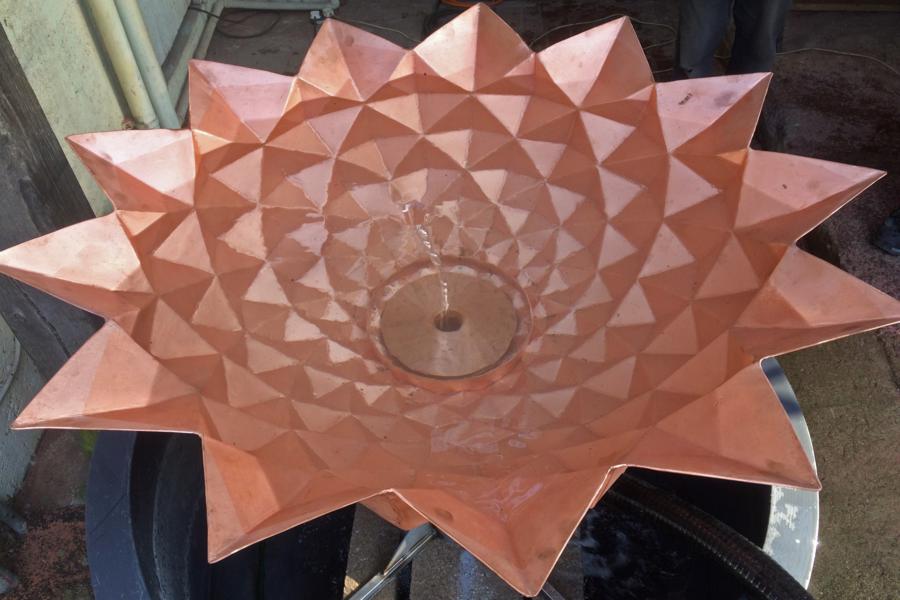
Interior of the copper bowl with water
There is an overarching sense this design is a testament to the beauty of nature expressed in mathematical form, and I wish I were visiting to see it in its entirety, with all the components in place. I will, however, be looking forward to seeing the photographs!
The RHS Chelsea Flower Show in London runs from Tuesday, 24 May to Saturday, 28 May 2016.
